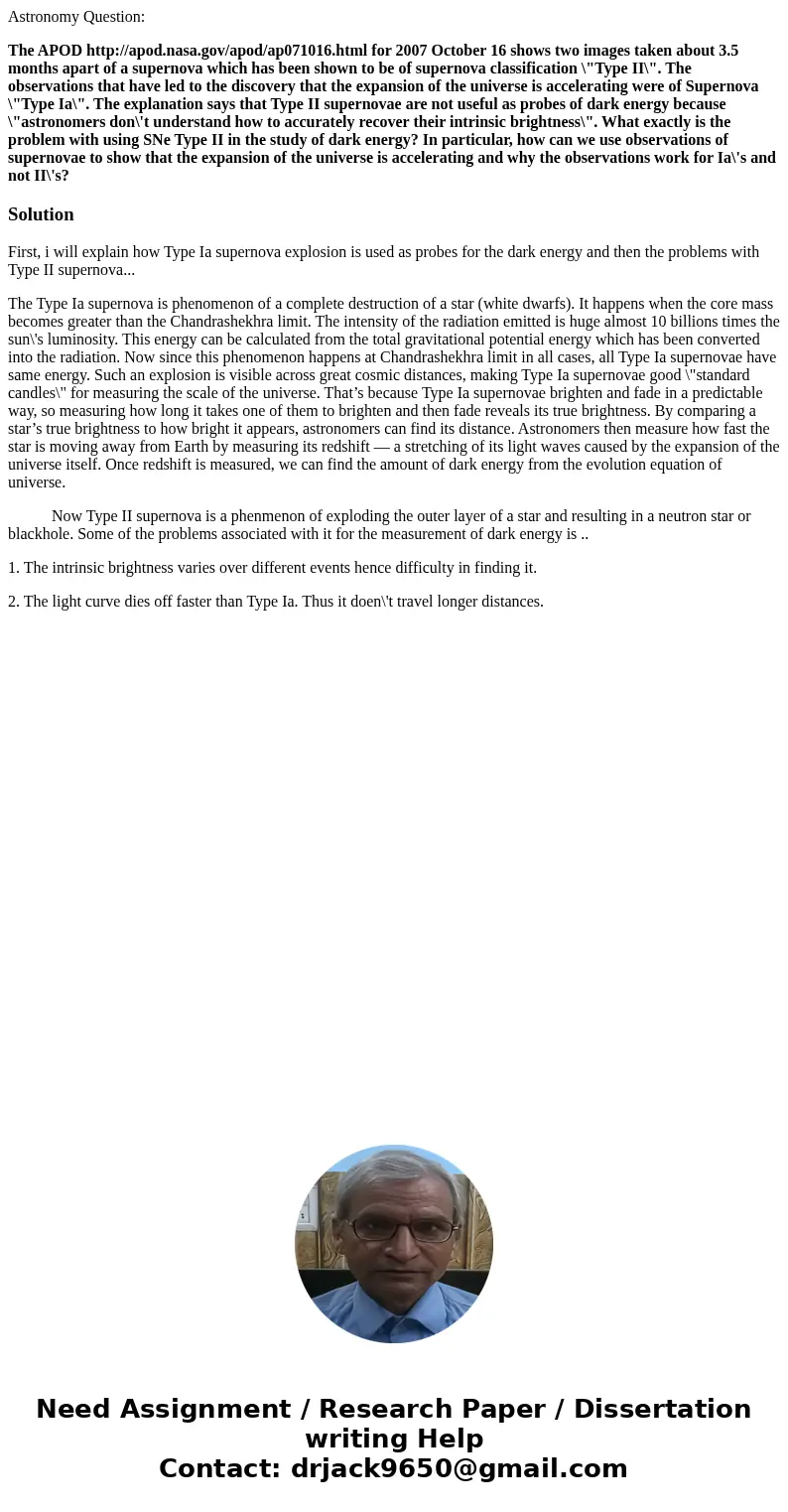Astronomy Question The APOD httpapodnasagovapodap071016html
Astronomy Question:
The APOD http://apod.nasa.gov/apod/ap071016.html for 2007 October 16 shows two images taken about 3.5 months apart of a supernova which has been shown to be of supernova classification \"Type II\". The observations that have led to the discovery that the expansion of the universe is accelerating were of Supernova \"Type Ia\". The explanation says that Type II supernovae are not useful as probes of dark energy because \"astronomers don\'t understand how to accurately recover their intrinsic brightness\". What exactly is the problem with using SNe Type II in the study of dark energy? In particular, how can we use observations of supernovae to show that the expansion of the universe is accelerating and why the observations work for Ia\'s and not II\'s?
Solution
First, i will explain how Type Ia supernova explosion is used as probes for the dark energy and then the problems with Type II supernova...
The Type Ia supernova is phenomenon of a complete destruction of a star (white dwarfs). It happens when the core mass becomes greater than the Chandrashekhra limit. The intensity of the radiation emitted is huge almost 10 billions times the sun\'s luminosity. This energy can be calculated from the total gravitational potential energy which has been converted into the radiation. Now since this phenomenon happens at Chandrashekhra limit in all cases, all Type Ia supernovae have same energy. Such an explosion is visible across great cosmic distances, making Type Ia supernovae good \"standard candles\" for measuring the scale of the universe. That’s because Type Ia supernovae brighten and fade in a predictable way, so measuring how long it takes one of them to brighten and then fade reveals its true brightness. By comparing a star’s true brightness to how bright it appears, astronomers can find its distance. Astronomers then measure how fast the star is moving away from Earth by measuring its redshift — a stretching of its light waves caused by the expansion of the universe itself. Once redshift is measured, we can find the amount of dark energy from the evolution equation of universe.
Now Type II supernova is a phenmenon of exploding the outer layer of a star and resulting in a neutron star or blackhole. Some of the problems associated with it for the measurement of dark energy is ..
1. The intrinsic brightness varies over different events hence difficulty in finding it.
2. The light curve dies off faster than Type Ia. Thus it doen\'t travel longer distances.

 Homework Sourse
Homework Sourse